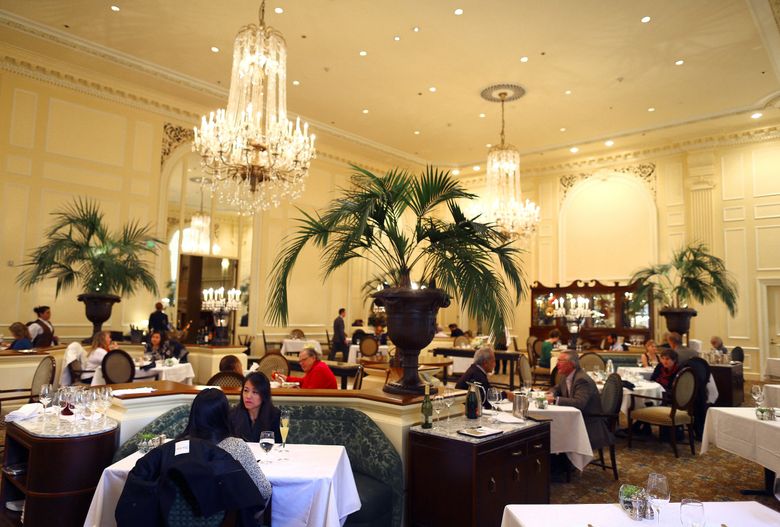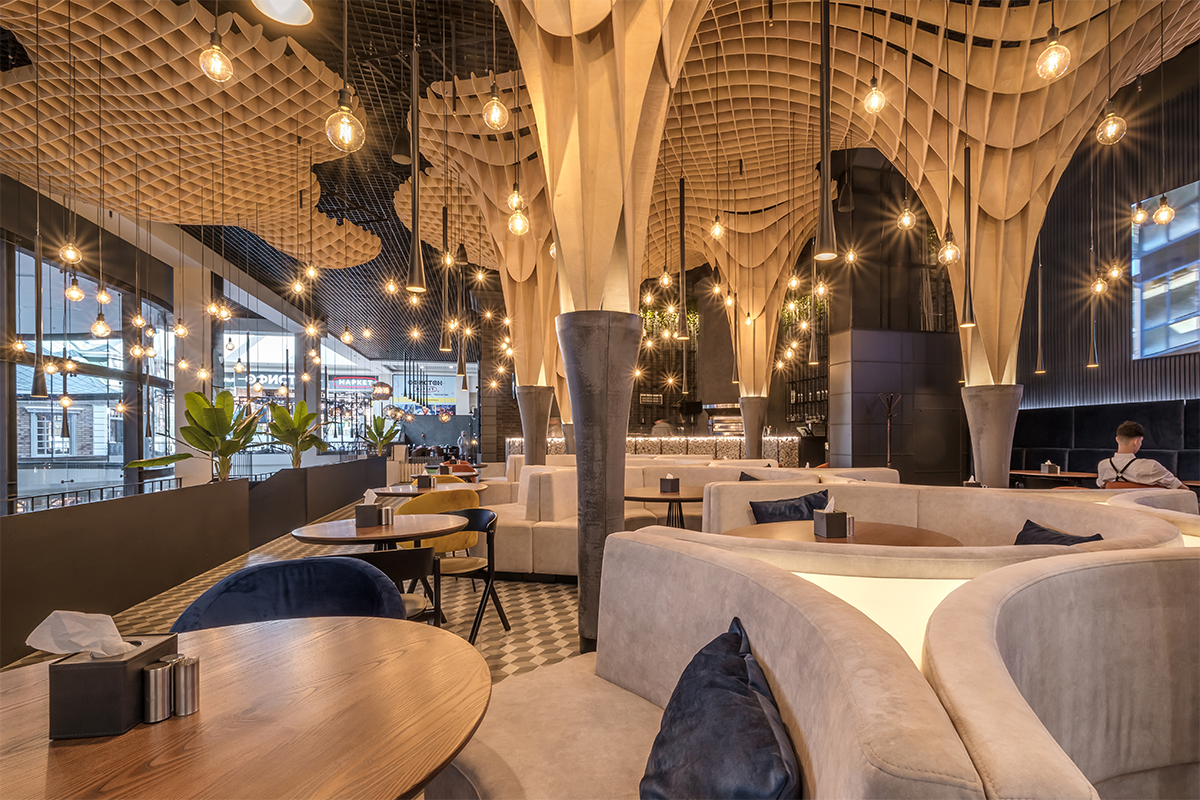Romantic Restaurants Islamabad: Perfect Dining Locations for Pairs
Romantic Restaurants Islamabad: Perfect Dining Locations for Pairs
Blog Article
Savor Genuine Oriental Food With a Pan-Asian Spin for a Cooking Experience
Starting a cooking journey with genuine Eastern food, boosted with a Pan-Asian spin, provides a special possibility to explore the rich tapestry of flavors that define the region's diverse culinary customs. This experience invites you to relish the charming equilibrium of tastes-- sweet, salty, spicy, and sour-- balanced by fragrant natural herbs and flavors. Imagine the ingenious combination of Thai curry and ramen or the unforeseen pleasure of sushi burritos. As you contemplate these luring recipes, take into consideration the social stories and historic influences that shape them, each bite offering a story waiting to be uncovered.

Checking Out Pan-Asian Tastes
In the realm of international gastronomy, Pan-Asian food attracts attention for its exceptional diversity and the unified interplay of tastes from different Eastern cultures. This culinary strategy celebrates the abundant practices and special components found throughout the continent, developing a tapestry of tastes that is both gratifying and intriguing. Secret to Pan-Asian cuisine is its capacity to balance different tastes-- wonderful, salted, spicy, and sour-- while highlighting the freshness and top quality of each active ingredient.
From the umami-rich soy sauce of Japan to the intense chili peppers of Thailand, Pan-Asian food uses a comprehensive scheme of tastes. These components are usually integrated in creative means, boosting recipes with layers of complexity. As an example, the usage of fragrant natural herbs such as lemongrass and cilantro, usual in Vietnamese and Thai food, adds a rejuvenating illumination to recipes, while the incorporation of coconut milk delivers a creamy, abundant appearance.
The emphasis on fresh fruit and vegetables and aromatic flavors guarantees that each meal is not only a feast for the taste but also for the senses. Pan-Asian cuisine invites restaurants to get started on a culinary trip, exploring the substantial and differed landscapes of Oriental gastronomy with every bite.
Blend Dishes to Attempt
While Pan-Asian cuisine is celebrated for its traditional tastes, the contemporary culinary landscape is increasingly welcoming combination recipes that mix these timeless components with influences from various other areas. This ingenious approach not just honors the rich heritage of Asian cookeries but also presents unique preference experiences that appeal to contemporary tastes.
A prime example of such a combination dish is the Korean-Mexican taco, where marinaded bulgogi beef is covered in a warm tortilla, topped with kimchi and a zesty gochujang-infused salsa. This combination weds the bold, tasty flavors of Korea with the vivid, fresh aspects of Mexican food. Likewise, sushi burritos have obtained popularity, integrating the fragile virtuosity of Japanese sushi with the hearty, hand-held ease of a burrito, usually featuring fusion active ingredients like tempura shrimp and avocado with a drizzle of wasabi mayo.
Another notable recipe is Thai curry ramen, which infuses the luscious, aromatic flavors of Thai curry right into the comforting brew of conventional Japanese ramen, producing an unified blend that entices the detects. These fusion recipes expand beyond plain uniqueness; they stand for a culinary dialogue between cultures, motivating expedition and technology worldwide of Pan-Asian cuisine.
Essential Components and Seasonings
To absolutely value Pan-Asian cuisine, one should understand the vital components and seasonings that create its structure. This diverse culinary style draws from a rich tapestry of Eastern practices, utilizing a harmonious blend of tastes and structures.
Fragrant aspects are essential, with lemongrass, garlic, and ginger try this website being common throughout various Pan-Asian dishes. These components supply an aromatic base that enhances the intricacy of flavors. Seasonings such as celebrity anise, cardamom, and cinnamon introduce heat and character, echoing impacts from regions like China and India.

Cooking Strategies and Tips
Mastering the art of Pan-Asian cuisine requires knowledge with its distinctive cooking methods, each adding to the vibrant tapestry of tastes this culinary practice is commemorated for. Central to these approaches is the stir-fry, a fast cooking technique that preserves the dietary integrity and brilliant shades of ingredients. Making use of a wok, the stir-fry method allows for even heat circulation, important for accomplishing the particular texture and flavor equilibrium of Pan-Asian recipes.
An additional basic technique is steaming, specifically widespread in Chinese food. This mild technique maintains the natural flavors and nutrients of ingredients, making it optimal for fish and shellfish and veggies. Dumplings, a beloved staple, commonly benefit from steaming, resulting in soft, succulent appearances.
Grilling, likewise important, passes on smoky depths to meals such as Korean bulgogi or Japanese yakitori (asian restaurant isb). This technique frequently includes marinading components, enabling tastes to pass through deeply prior to food preparation over an open flame or warm plate
Finally, understanding the art of stabilizing tastes-- sweet, sour, salted, bitter, and umami-- is essential. Properly layering these components can raise a dish from ordinary to remarkable, offering a facility and satisfying cooking experience that personifies the significance of Pan-Asian cuisine.
Eating Experiences Worldwide
Around the world, Pan-Asian food uses an unparalleled eating experience, celebrated for its rich tapestry of flavors and vivid presentations. This cooking phenomenon has actually gone beyond cultural borders, capturing the hearts and tastes of food enthusiasts worldwide. In cosmopolitan oyster bar cities fresh York, London, and Sydney, Pan-Asian restaurants act as fusions where culinary traditions from Thailand, Japan, China, and beyond assemble, providing restaurants with a diverse mix of recipes that highlight the region's variety.
The international appeal of Pan-Asian cuisine hinges on its ability to provide both credibility and innovation. Chefs skillfully marry typical active ingredients such as lemongrass, soy sauce, and miso with contemporary techniques, resulting in meals that are both acquainted and refreshingly brand-new. This fusion enables diners to start a culinary journey that appreciates heritage while accepting modernity.
Additionally, dining experiences are elevated through thoughtfully created atmospheres that show the ethos of Pan-Asian aesthetics. From minimalist Japanese-inspired interiors to vibrant Thai-themed spaces, each dining establishment offers a distinct ambiance that complements the cooking offerings. As an outcome, clients are not just taking in a meal yet partaking in a cultural experience, making Pan-Asian eating a truly global sensation.
Final Thought
The expedition of Pan-Asian cuisine offers an extensive understanding of the detailed interaction of tastes and cooking customs across Asia. By embracing blend dishes such as Thai curry ramen and sushi burritos, the cooking journey not only highlights the adaptability of standard ingredients but additionally showcases cutting-edge contemporary methods. This gastronomic adventure, improved by essential spices and cooking techniques, supplies an unique opportunity to value the cultural variety and culinary creativity that define Pan-Asian food on a worldwide scale.
Getting started on a culinary trip with genuine Oriental food, enhanced with a Pan-Asian twist, uses a distinct possibility to explore the rich tapestry of flavors that define the area's diverse cooking traditions.In the world of global gastronomy, Pan-Asian cuisine stands out for its remarkable diversity and the unified interplay of tastes from various Oriental societies. Key to Pan-Asian food is its capacity to balance different flavors-- sweet, salted, spicy, and sour-- while highlighting the quality and quality of each component.

Report this page